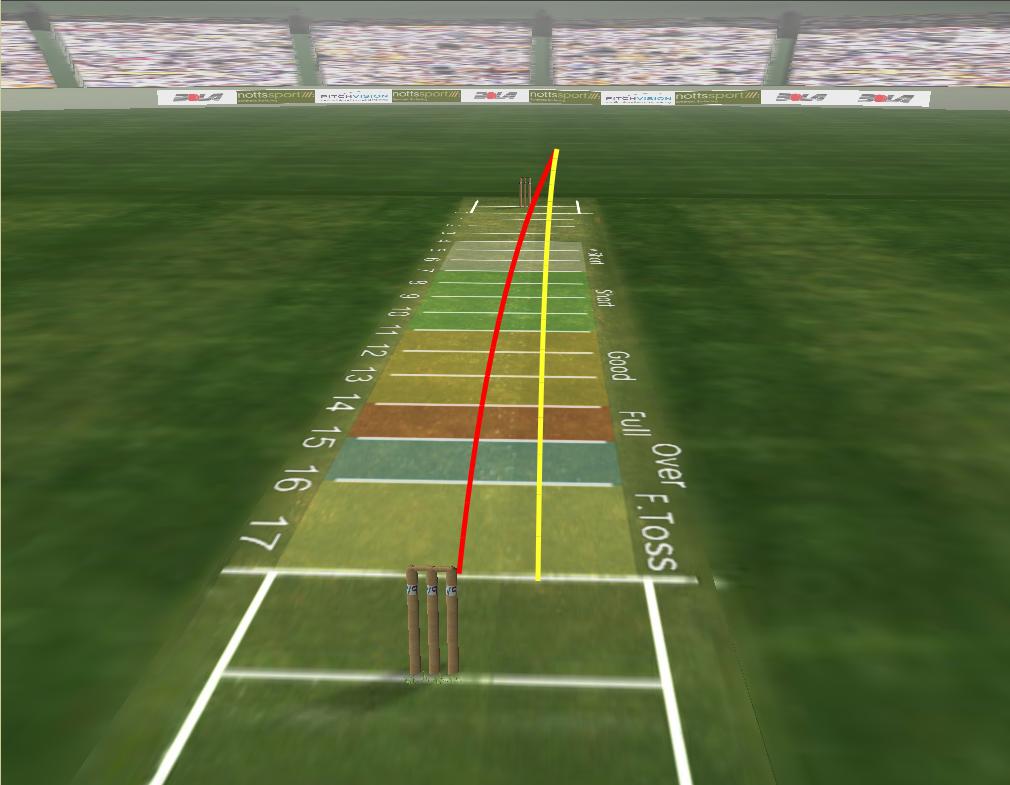How to bowl in Twenty20 cricket: Pace bowling
Twenty20 bowling is about limiting scoring by stopping the batsman playing his best shots.
Unlike longer formats this is not done through bowling a predictable line and length. This approach simply gives the batsman the chance to play his premeditated shots or free her arms and hit you all over the park. The solution is to have a range of different lines, lengths and angles combined with changes of pace.
This is not easy. You know how hard it is to get one line and length right, let alone several, but with practice you can come up with some reliable variations that will allow your captain to set a field and be a success.
This is the traditional line and length that you see seam and swing bowlers aim for all over the world: On or just outside off stump, bouncing to about hip height. It works best early in the match. The ball is new and more likely to swing or move off the seam. Batsmen tend to play less risky shots so you can be a little more predictable with the ball and try to get wickets.
The exact length may be forward slightly for swing bowlers or back slightly for seam bowlers but the idea is to put the batsman in two minds: play forward or play back? Any indecision leads to false shots and edges behind.
On slower pitches the approach may be fuller and straighter to try and hit the stumps or bring in LBW, however bowling too straight normally leads to easy runs through the leg side. It's important not to bowl too wide outside off stump on any pace pitch as the batsman can throw his or her arms at the ball.
The yorker is a quicker ball aimed at the batsman's feet. It's hard to hit for runs and just as hard to bowl right so needs lots of practice.
In the picture there are two lines. The red line is the yorker aimed at the stumps, ideally with a bit of inswing. This is good for a variation early on or bowing at the death of the innings. The yellow line is a wide yorker which is more defensive but even harder to hit so is a good variation for bowling at the death.
This very defensive tactic is designed to cut off scoring on the leg side. The right arm bowler goes around the wicket, aiming full and as wide as possible without it being a wide on the off side. The deep fielders can then be set on the off side boundary as it is almost impossible to play the ball to leg.
If the bowling and pitch is quick enough you can follow the tactics that England and West Indies successfully tried against India in the World Twenty20: Bounce them out.
The trick is not to bowl balls that bounce over the head of the batsman as this is a wide. However, getting the ball in above the hip and below the head is ideal. Batsman can only attack by hooking and pulling, which is hard against genuine aggressive bowling at the body.
However, getting this wrong can be a disaster. Bowling short and slow gives the batsman enough time to hit the ball almost anywhere on the leg side they like. If the line strays to the off side the traditional cut or unorthodox slice over the slips can be played.
A good variation of this is the loopy bouncer, bowled at a slower pace. As the batsman is expecting something rising to his chest he can struggle to time the ball if it arrives much more slowly.
There are many variations of slower ball. Some come from changes in the grip, others are genuine different balls such as cutters or back-of-the-hand leg breaks. With all the types the key is line. At the start of a short game aim straight so if they miss you hit the stumps. However, you may want to adjust the line to outside off stump at the death, especially if the batsman is more leg side biased.
Again the key is to practice your variation in the nets before trying it in the middle. A slower long hop or half volley are easy to hit, a slow ball in the right place will be slogged up in the air.
- Login to post comments






Comments
Andrew,
Well done to Pakistan. How refreshing to see players as young as 19 and 17 playing in an international final. Maybe England can learn from this. Why are we so conservative in T20?
Also excellent articles (as always) on T20, especially the powerpoint presentation.
Keep up the good work.
Kind regards,
Robin Collins
Hello David,
Well don, Pakistan. How refreshing to see a 17 and 19 year old's in an international final. Could you imagine England doing that. Why are England so conservative in this form of the game?
Also great articles about T20, especially the power point.
Keep up the good work.
Regards,
Robin